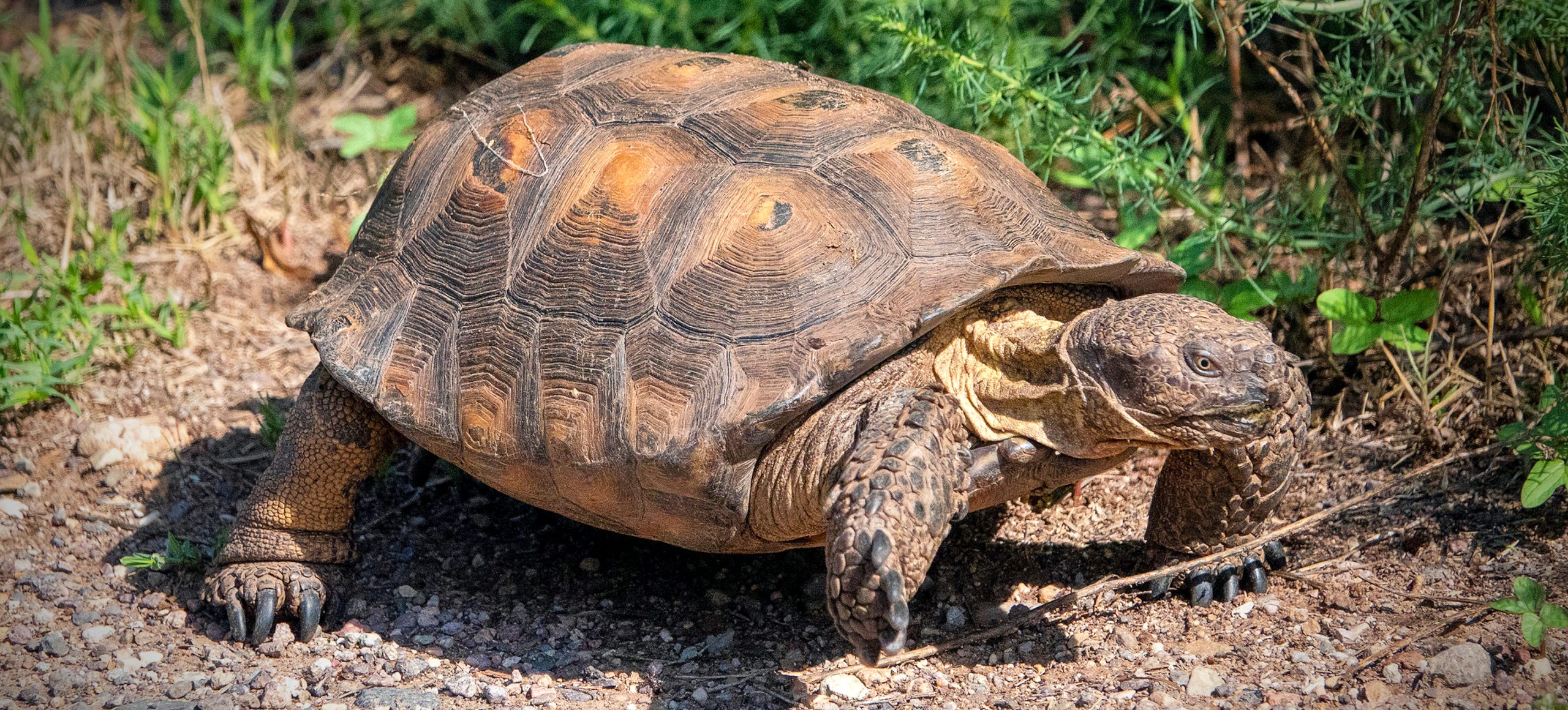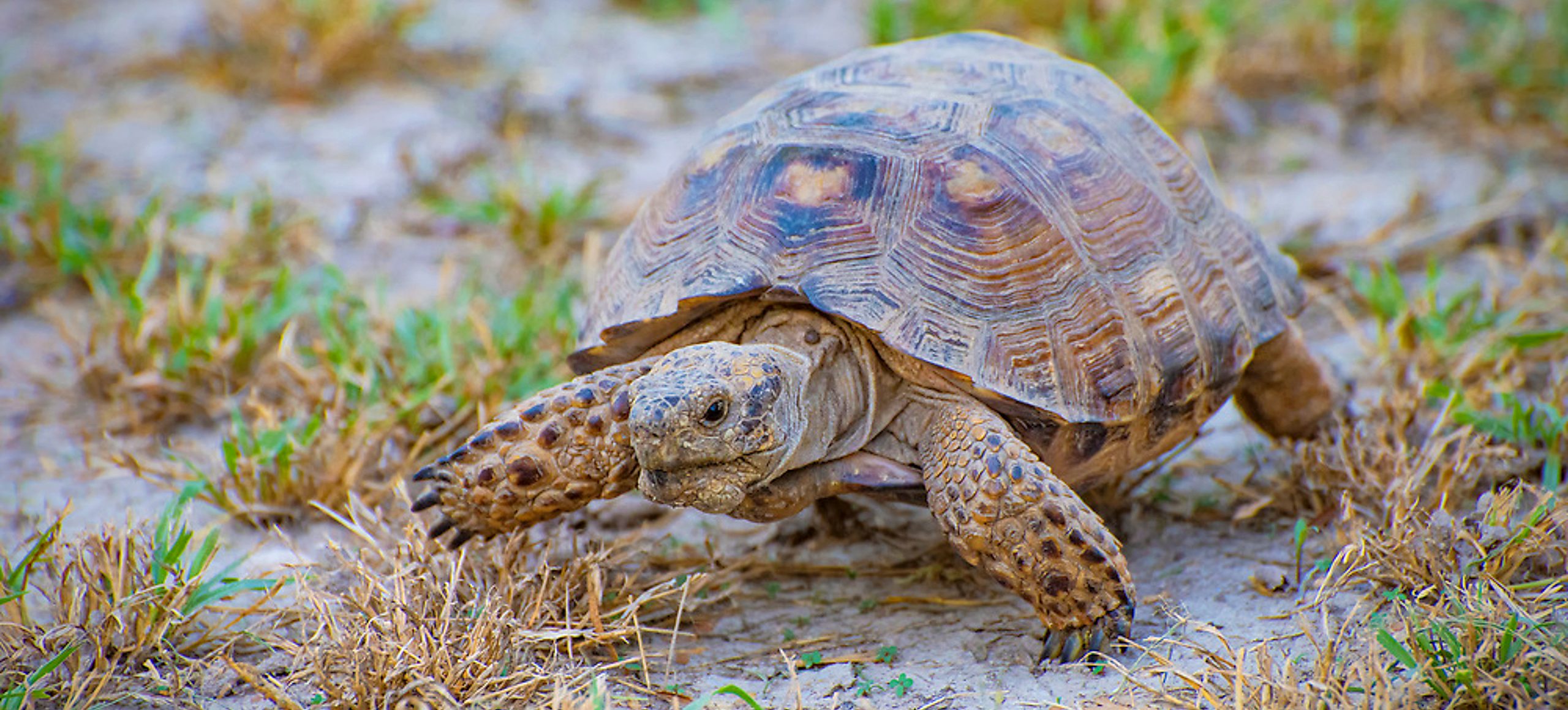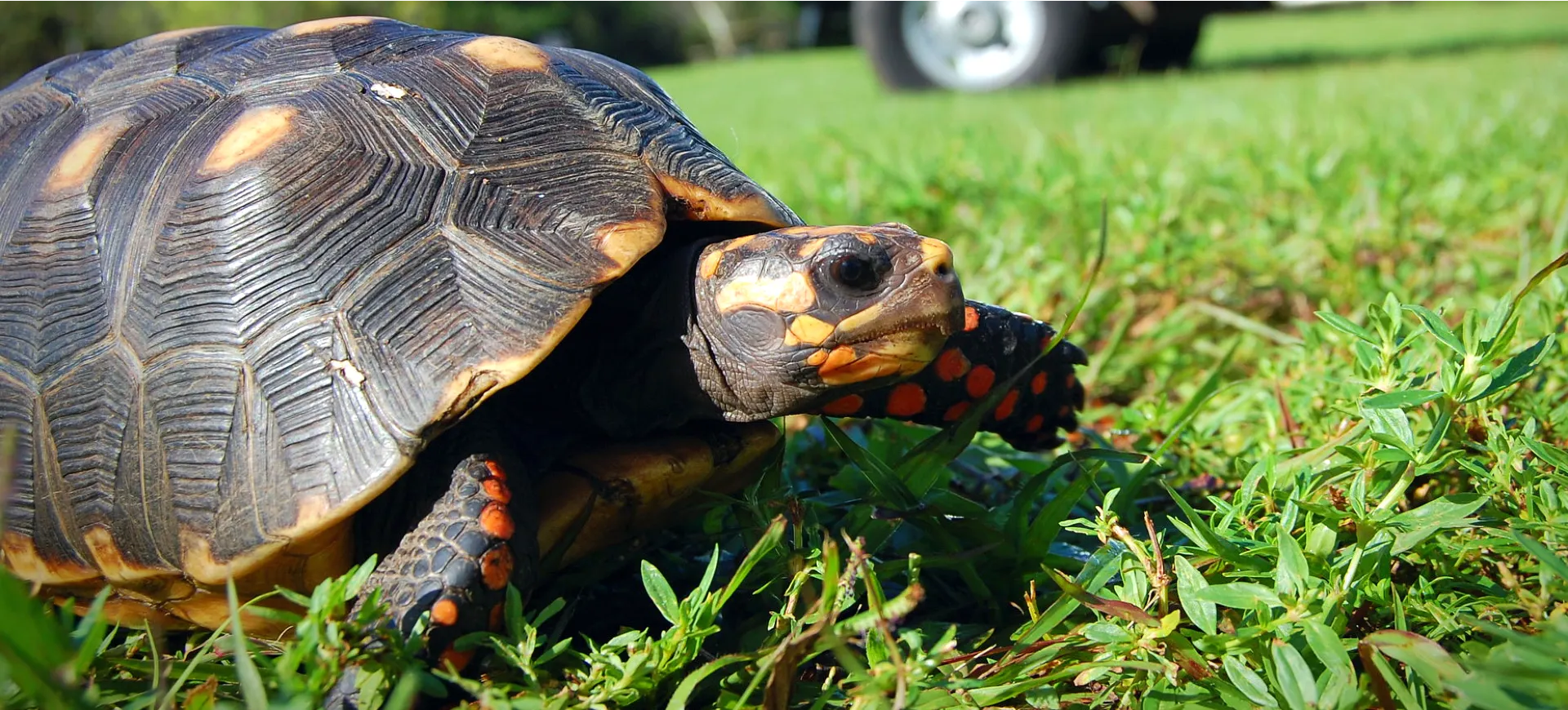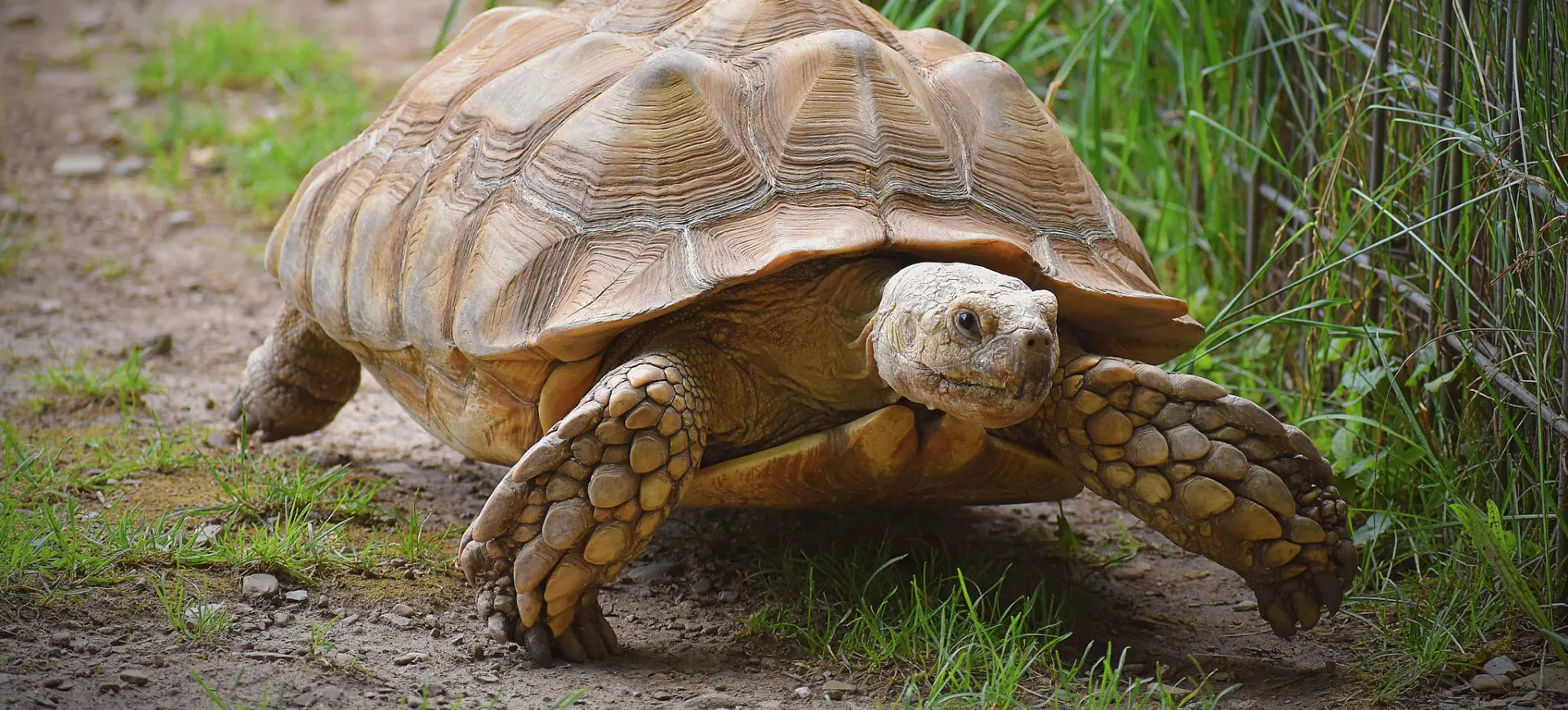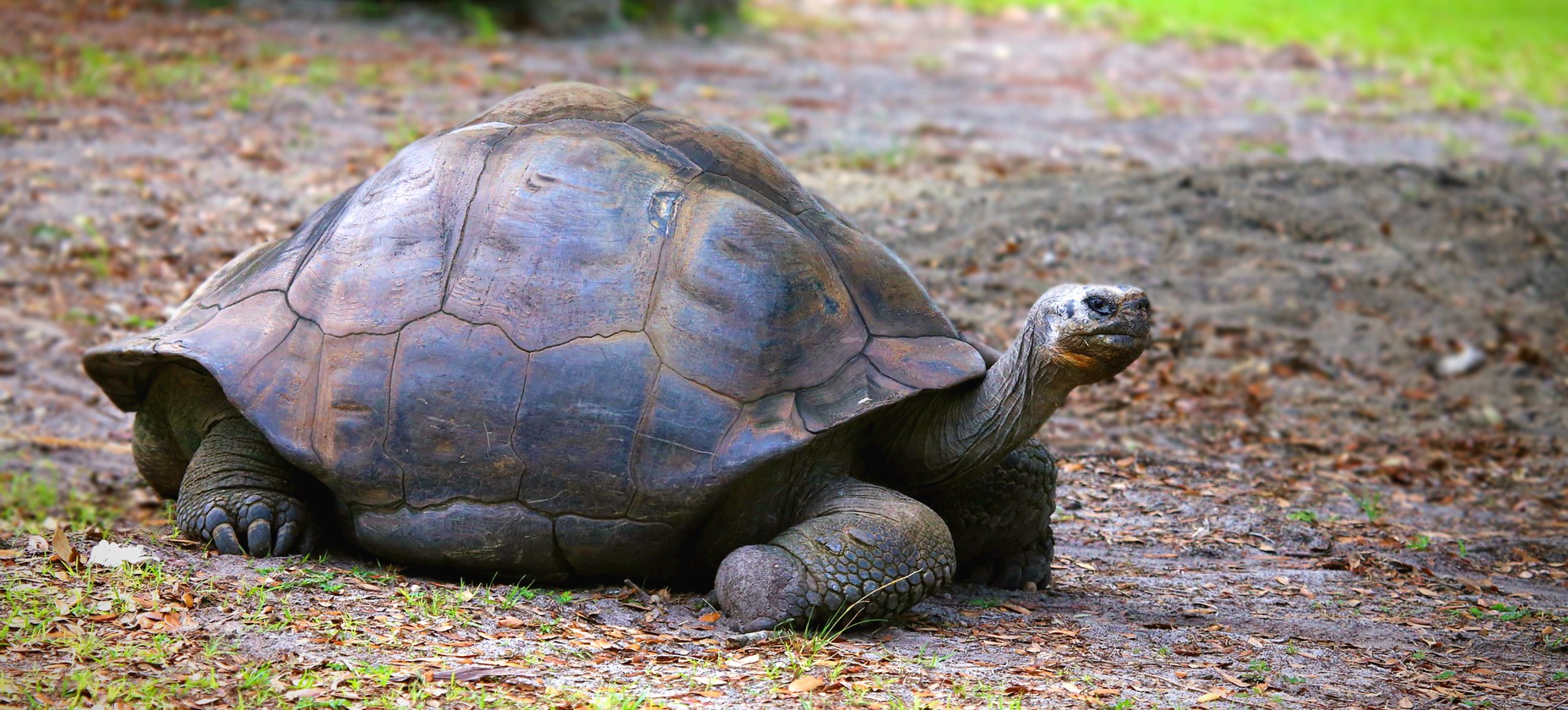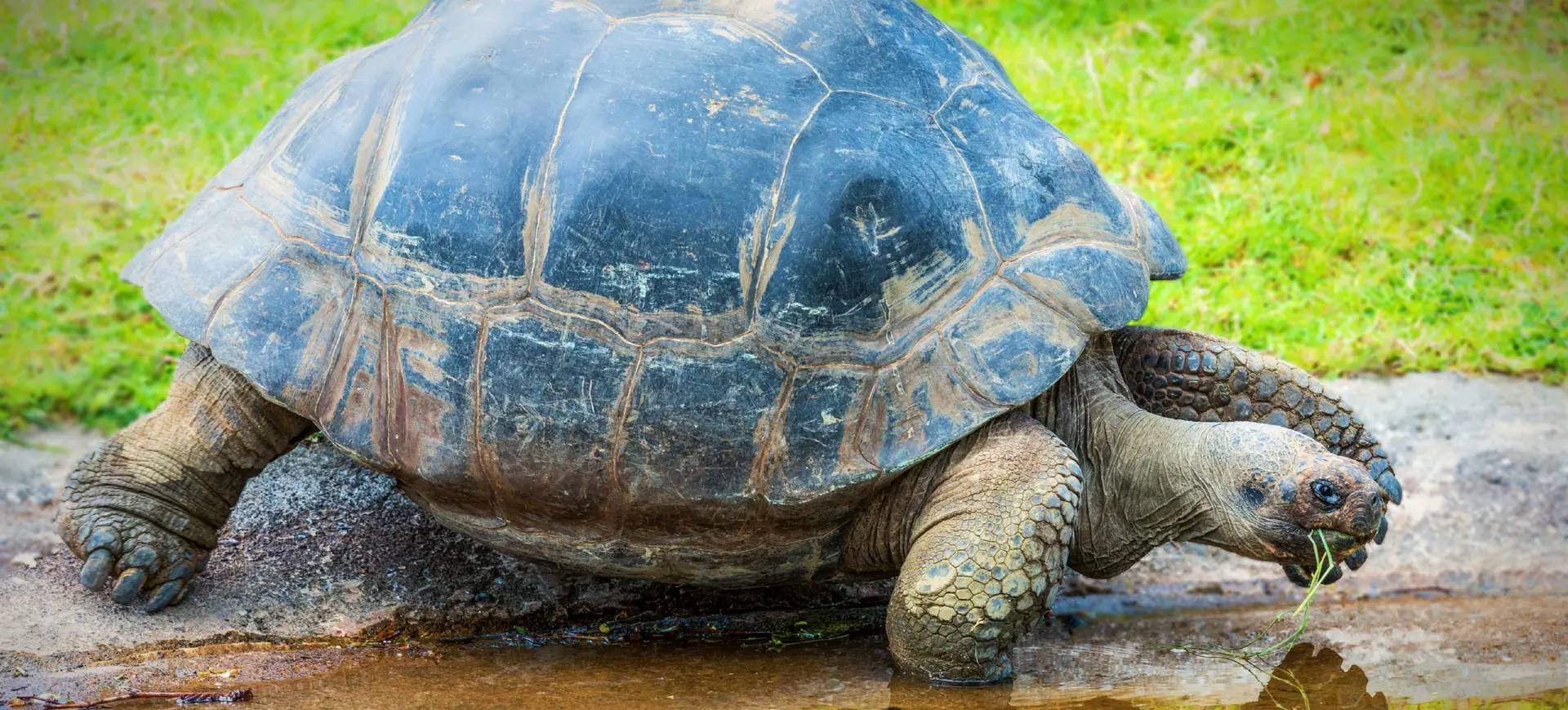Overview
The Forest Hinge-back Tortoise, a less commonly known species, thrives in Africa’s dense forests and humid environments. This species is distinguished by a flexible hinge on its carapace, which allows it to close its shell completely, offering protection from predators and environmental extremes. They exhibit a varied coloration, often blending seamlessly with the forest floor’s leaf litter, aiding in their camouflage. With a diet primarily consisting of fungi, fruits, and vegetation, these tortoises play a crucial role in their ecosystem as seed dispersers and consumers of decomposing material.
Forest Hinge-back Tortoises possess a moderate size compared to other tortoise species, with a shell that can show significant variation in shape and size across individuals. Their life expectancy in the wild can be markedly long, reflecting their slow-paced lifestyle and low reproductive rate. These tortoises face threats from habitat destruction, poaching for the pet trade, and local consumption, which have led to a decline in their population in certain areas.
The unique adaptation of their hinged carapace serves as a defense mechanism and highlights the evolutionary diversity within the tortoise family. This feature allows them to tuck away their vulnerable parts, such as the head and limbs, securely within their shell, making them less accessible to predators. Their coloration further enhances their survival chances by camouflaging them against the forest floor, making it difficult for predators to spot them. Despite their defense mechanisms, the ongoing loss of habitat due to deforestation, agricultural expansion, and urban development poses a significant threat to their existence. The illegal pet trade exacerbates this issue, with many individuals being captured and sold, often without regard for their well-being or conservation status.
Taxonomy
Kingdom
Phylum
Class
Order
Family
Genus
Species
Type
Physical Description:
The Forest Hinge-back Tortoise is characterized by its unique hinged carapace, which can close tightly against the plastron, offering an effective defense mechanism. Their shells are typically brown to dark brown, with the serration along the rear edge of the carapace giving them their common name. These tortoises have sturdy limbs adapted for digging and foraging through the dense forest floor, with males generally larger and possessing more pronounced tail features than females. The texture of their skin and shell allows them to blend into their surroundings, providing additional protection against predators.
Males and females can be distinguished by their plastron shape and tail length, with males having a concave plastron to facilitate mating. The growth rings on their shells can help estimate their age, although this method becomes less accurate as the tortoise’s age. Juveniles have a more vibrant coloration and smoother shells, which become more rugged and darker as they mature. The physical adaptations of the Forest Hinge-back Tortoise, including their hinged shell, play a crucial role in their survival in the wild.

Lifespan: Wild: ~50 Years || Captivity: ~60 Years

Weight: Male: 2-3 lbs (0.9-1.36 kg) || Female: 1.5-2.5 lbs (0.68-1.13 kg)

Length: Male: 6-8 inches (15.24-20.32 cm) || Female: 5-7 inches (12.7-17.78 cm)

Height: Male: 4-5 inches (10-12.7 cm) || Female: 3.5-4.5 inches (8.9-11.4 cm)
Characteristic:
Native Habitat:
The Forest Hinge-back Tortoise is native to the dense, humid forests of Central and West Africa, where it finds the moist and shaded environments it requires. These tortoises prefer areas with abundant leaf litter and vegetation, providing food and cover from predators. They are adapted to life in relatively stable, humid conditions, and their physical characteristics reflect their reliance on the forest’s resources for survival.
The specific habitat requirements of the Forest Hinge-back Tortoise make them vulnerable to environmental changes, such as deforestation and habitat fragmentation. These tortoises are seldom found in open areas or significantly altered landscapes, relying heavily on the dense forest canopy for protection and the availability of food sources. Conservation efforts for these tortoises often focus on protecting and restoring their natural habitats to ensure their long-term survival.
Climate Zones:
Biomes:
WWF Biomes:
Biogeographical Realms:
Continents:
Countries:
Diet:
Diet & Feeding Habits:
Forest Hinge-back Tortoises are omnivorous, with a diet that includes various plant matter, fruits, fungi, and occasionally carrion and invertebrates. This varied diet reflects their adaptability to the available resources within their forest habitat. They play a significant role in their ecosystem as seed dispersers, aiding in the regeneration of their forest environment. During the rainy season, when food is more abundant, these tortoises increase their activity levels to forage, storing energy for the dryer seasons.
In captivity, their diet must be carefully managed to mimic their natural feeding habits, including a mix of leafy greens, fruits, and specialized tortoise food to ensure they receive all necessary nutrients. Overfeeding or an imbalanced diet can lead to health issues, highlighting the importance of dietary management for captive tortoises. They also require access to clean water for drinking and bathing, which helps maintain their hydration and overall health.
Mating Behavior:
Mating Description:
The mating behavior of the Forest Hinge-back Tortoise includes a series of visual and tactile cues, with males often engaging in aggressive interactions to compete for access to females. Males display unique behaviors, such as ramming and biting, to assert dominance and secure mating opportunities. Females lay a small number of eggs in carefully prepared nests, which they then cover with soil and leaf litter to protect them from predators and environmental extremes.
The reproductive cycle of these tortoises is closely tied to the seasonal changes in their environment, with mating typically occurring at the beginning of the rainy season when food resources are abundant. The incubation period for their eggs can vary based on temperature and humidity, with hatchlings emerging fully independent and capable of fending for themselves. Conservation efforts often include protecting nesting sites and reducing predation pressures to enhance reproductive success and support population growth.
Reproduction Season:
Birth Type:
Pregnancy Duration:
Female Name:
Male Name:
Baby Name:
Social Structure Description:
Forest Hinge-back Tortoises are primarily solitary animals, with individuals typically occupying their territories and only coming together for mating. Their social interactions are limited, with most communication occurring during the breeding season through visual and physical cues. These tortoises’ territorial nature means they can be aggressive towards others of the same species, especially when resources are scarce.
Despite their solitary nature, these tortoises play a significant role in their ecosystems, contributing to seed dispersal and the breakdown of organic material. Their behavior and movements through the forest floor help to aerate the soil and promote plant growth, showcasing the interconnectedness of species within their habitats.
Groups:
Conservation Status:
Population Trend:
The Forest Hinge-back Tortoise’s population in the wild is decreasing, with specific numbers hard to ascertain due to their secretive nature and fragmented habitats. Habitat destruction, poaching for the pet trade, and local consumption are the primary threats to their survival. These tortoises are particularly vulnerable to habitat loss due to deforestation and agricultural expansion, which reduces their available living space and food sources.
Conservation efforts are focused on habitat protection and restoration and combating illegal trade. Establishing protected areas and wildlife corridors is crucial for survival, allowing for safer migration and access to larger territories. Education and community involvement in conservation are also vital, as they help to reduce the demand for tortoises as pets and increase local support for conservation initiatives.
Population Threats:
Habitat destruction due to logging, agriculture, and urban expansion poses the most significant threat to the Forest Hinge-back Tortoise. These activities reduce their living space and fragment their habitats, isolating populations and making it difficult for individuals to find mates. The illegal pet trade further exacerbates their decline, with many tortoises being removed from the wild for sale domestically and internationally.
Climate change also presents a long-term threat, as shifts in rainfall patterns and temperatures could alter their habitats and the availability of food sources. Conservation strategies must address these threats comprehensively, combining habitat protection with efforts to curb illegal trade and engage communities in conservation.
Conservation Efforts:
Conservation efforts for the Forest Hinge-back Tortoise include habitat protection, research, and awareness campaigns to reduce the demand for wild-caught tortoises. Protected areas and national parks are essential for providing safe habitats, while conservation breeding programs aim to bolster wild populations. International cooperation is also critical, as many threats to these tortoises cross national boundaries.
Education and community engagement play a vital role in conservation, helping to change attitudes towards wildlife and encouraging the protection of natural habitats. By involving local communities in conservation efforts, it is possible to create sustainable solutions that benefit both the tortoises and the people who share their environment. These efforts are crucial for ensuring the long-term survival of the Forest Hinge-back Tortoise in the wild.
Additional Resources:
Fun Facts
- The hinge on their carapace is a unique adaptation that allows them to close their shell completely for protection.
- Forest Hinge-back Tortoises can live for several decades, reflecting their slow growth and reproductive rates.
- They play a vital role in their ecosystem as seed dispersers, aiding in the growth of new plants.
- Despite their hard shells, these tortoises can feel pressure and touch through their shells.
- The incubation temperature of the eggs determines the sex of the hatchlings.
- They have a keen sense of smell, which they use to locate food.
- In some cultures, these tortoises are considered symbols of longevity and resilience.
- Their serrated shell edge is not found in many other tortoise species.
- Conservation efforts for these tortoises include habitat restoration and the fight against illegal pet trade.
- They can survive without water for extended periods by retaining moisture from their food.






